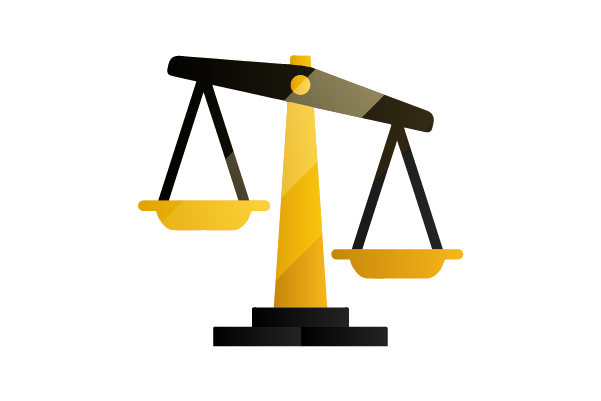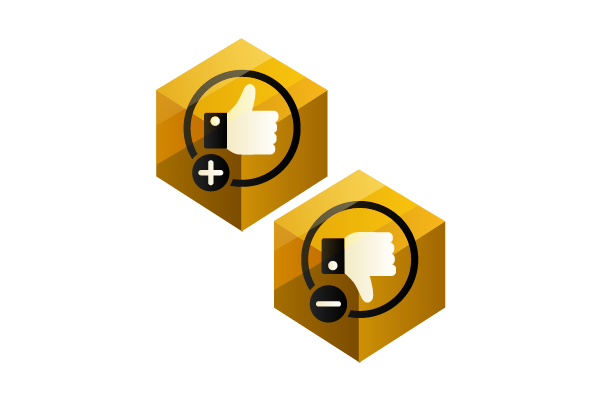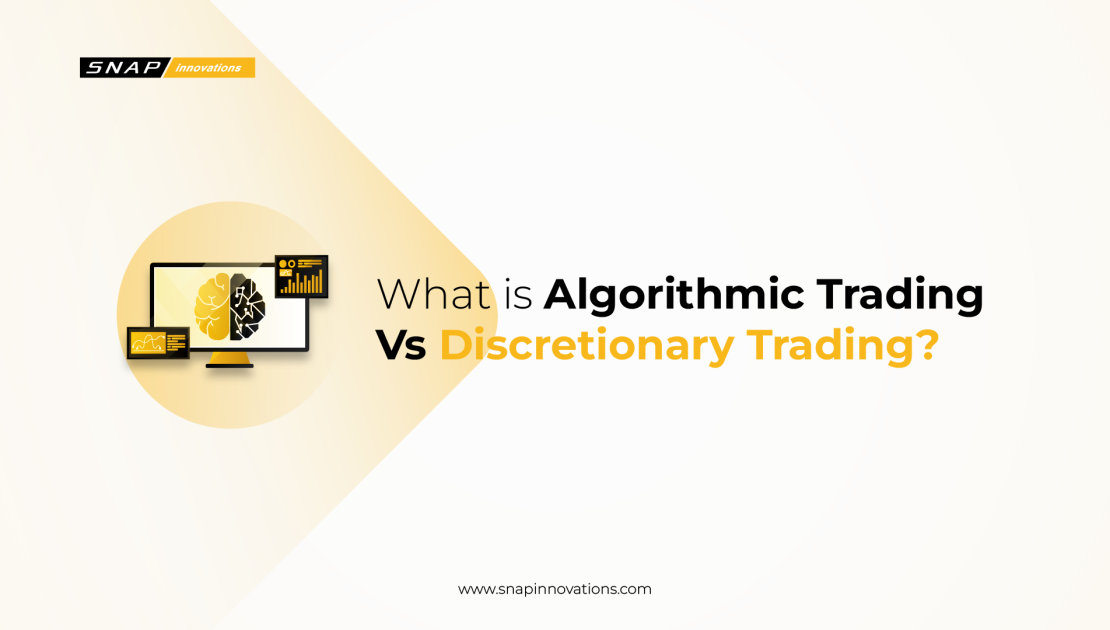In this evolving landscape, the contrast between algorithmic and discretionary trading highlights the diverse approaches traders can adopt. Algorithmic trading, with its reliance on sophisticated software and algorithms, represents the cutting edge of technology in finance, leveraging speed, precision, and the ability to process vast amounts of data. On the other hand, discretionary trading embodies the more traditional aspect of trading, relying on human judgment, intuition, and experience to make decisions.
This blend of technology and tradition in the trading world not only offers a range of strategies for traders but also reflects the broader changes in how financial markets operate in the digital age. As the financial markets become increasingly complex, understanding the nuances of these trading methodologies is essential for any trader looking to navigate these waters successfully, whether they’re a seasoned professional or a newcomer to the field.
What is Algorithmic Trading Vs Discretionary Trading?
Algorithmic trading, also known as algo trading or black-box trading, leverages computer programs to execute trades based on pre-defined rules and algorithms. These automated systems analyze market data, identify trading opportunities, and place orders automatically, often within milliseconds. Algorithmic trading strategies rely heavily on quantitative analysis, mathematical models, and statistical algorithms.
In addition to its speed and efficiency, algorithmic trading also offers the benefit of reducing transaction costs. By automating the trading process, it minimizes the impact of human error and emotional biases, which can often lead to costly mistakes. Moreover, algorithms can be designed to execute large orders in a way that minimizes market impact, thereby optimizing trade execution and potentially improving overall returns.
Discretionary trading, on the other hand, relies on human judgment and experience to make trading decisions. Discretionary traders analyze market data, identify trading opportunities, and execute trades manually. They may utilize various tools and techniques, including fundamental analysis, technical analysis, and chart patterns, but ultimately rely on their own interpretation and intuition to make decisions.
This trading style allows for a high degree of flexibility and adaptability. Discretionary traders can quickly alter their strategies based on market conditions, new information, or changes in economic policies. They have the ability to interpret nuances and subtleties in market behavior that might be overlooked by algorithms. For instance, during major geopolitical events or unexpected news announcements, discretionary traders can rapidly assess the situation and make decisions that might not be immediately obvious to a pre-programmed system.
Read More: What Are Liquid Assets? The Financial Lifeline
Key Differences between Algorithmic Trading and Discretionary Trading
 Several key distinctions set apart algorithmic and discretionary trading approaches:
Several key distinctions set apart algorithmic and discretionary trading approaches:
Execution Speed and Efficiency
- Algorithmic Trading: It offers unparalleled execution speed, enabling trades to be executed almost instantaneously. Automated systems rapidly analyze market data and execute trades without delay, capitalizing on market opportunities that might be too fleeting for human traders. This high-speed execution is particularly advantageous in volatile markets, where prices can change rapidly and unpredictably.
- Discretionary Trading: In comparison, discretionary trading is slower due to its reliance on human decision-making. Traders must first analyze the market, consider their strategies, and then manually execute trades. This process, while allowing for thoughtful and considered decisions, inherently lacks the speed of algorithmic systems, potentially resulting in missed opportunities in fast-moving markets.
Rule-Based vs. Judgment-Based Decisions
- Algorithmic Trading: This style is grounded in predefined rules and mathematical models, eliminating emotional and psychological biases from trading decisions. It follows a disciplined approach, with decisions based strictly on algorithmic criteria, leading to consistency and the potential for more predictable outcomes.
- Discretionary Trading: Here, traders rely on their judgment and intuition, influenced by their experience, knowledge, and market insights. While this can lead to unique and potentially lucrative decisions, it also opens the door to emotional influences like fear and greed, which can adversely affect trading decisions and outcomes.
Backtesting and Optimization
- Algorithmic Trading: Traders can rigorously test their strategies against historical data, allowing for the refinement and optimization of algorithms based on past performance. This process of backtesting helps identify the most effective strategies and fine-tune them for improved performance.
- Discretionary Trading: Discretionary strategies, on the other hand, often rely on personal intuition and experience, which are challenging to quantify and backtest. This means that while discretionary traders can learn from past experiences, they lack the systematic approach to optimization that algorithmic trading offers.
Adaptability to Market Conditions
- Algorithmic Trading: These systems can be designed to automatically adjust to changing market conditions. They can incorporate various strategies and parameters to switch tactics as market dynamics evolve, ensuring relevance and effectiveness in a range of market scenarios.
- Discretionary Trading: Human traders must continuously update their knowledge and skills to adapt to new market conditions. This adaptation is manual and relies on the trader’s ability to interpret and react to market changes, which can be slower and less systematic compared to algorithmic adjustments.
Emotional Control
- Algorithmic Trading: One of the primary advantages of algorithmic trading is the elimination of emotional decision-making. Since trades are executed based on pre-set criteria, there is no room for emotional biases, leading to a more disciplined and objective trading approach.
- Discretionary Trading: Emotional control is a significant challenge for discretionary traders. Emotions like fear, greed, and hope can cloud judgment, potentially leading to impulsive decisions or a failure to act when necessary. Managing these emotions is a crucial aspect of successful discretionary trading.
Skill Set Required
- Algorithmic Trading: This requires proficiency in quantitative analysis, programming, and statistical modeling. Traders must have a solid understanding of mathematical and computational methods to develop and maintain trading algorithms.
- Discretionary Trading: The skill set here emphasizes a deep understanding of fundamental and technical analysis, as well as a grasp of market psychology. Discretionary traders rely more on their ability to interpret market data and trends through experience and intuition rather than through mathematical models.
Accessibility and Cost
- Algorithmic Trading: Access to algorithmic trading often involves significant investment in technology and software, making it less accessible to individual or small-scale traders. The cost of developing and maintaining sophisticated algorithms can be prohibitive for many.
- Discretionary Trading: This approach is generally more accessible to a wider range of investors. It requires less technological investment and is more reliant on individual knowledge and skills, making it a more feasible option for individual and small-scale traders.
Trading Time Commitment
- Algorithmic Trading: Once set up, these systems can operate autonomously, continuously analyzing market data and executing trades with minimal human intervention. This allows traders to reduce their active trading time significantly.
- Discretionary Trading: This style requires constant market monitoring and analysis, demanding a significant time commitment. Traders must be actively involved in the trading process, making decisions and executing trades in real-time.
Transparency and Control
- Algorithmic Trading: While efficient, the complexity and opaqueness of algorithms can sometimes make it difficult to understand the decision-making process fully. This lack of transparency can be a concern, especially when it comes to assessing risk.
- Discretionary Trading: Offers complete transparency and control over trading decisions. Traders have a clear understanding of their strategies and the reasoning behind each trade, allowing for a more hands-on approach to risk management.
Trading Strategies
- Algorithmic Trading: This encompasses a diverse range of strategies like high-frequency trading, arbitrage, and market making. These strategies leverage the speed and computational power of algorithms to exploit market inefficiencies or patterns.
- Discretionary Trading: Strategies vary widely, from fundamental analysis to chart-based technical analysis. Discretionary traders use a blend of methods to identify trading opportunities, relying on their interpretation and judgment to guide their decisions.
Pros and Cons of Algorithmic Trading
 Pros:
Pros:
- Increased Speed and Efficiency: Algorithmic trading enables rapid execution of trades, taking advantage of market opportunities more quickly than human traders.
- Eliminates Emotions and Biases: By following predefined rules, algorithmic trading removes emotional decision-making from the trading process, leading to more objective and consistent decisions.
- Backtesting and Optimization: Traders can test strategies against historical data to refine and improve their algorithms, enhancing the potential for success.
- Adaptability to Market Conditions: Algorithms can be programmed to adjust strategies in response to changing market dynamics, maintaining relevance and effectiveness.
- Disciplined Decision-Making: The rule-based nature of algorithmic trading ensures a disciplined approach, reducing the likelihood of impulsive or ill-considered trades.
Cons:
- High Cost and Technical Expertise Required: Implementing algorithmic trading systems can be expensive and requires a deep understanding of programming and financial markets.
- Lack of Transparency and Control: The complexity of algorithms might lead to a lack of understanding of how decisions are made, potentially obscuring risks.
- Potential for Errors and Bugs: Algorithms are susceptible to errors and software bugs, which can lead to unexpected trading behaviors or significant financial losses.
- Susceptibility to Market Manipulation: Sophisticated market players may manipulate algorithms by creating market conditions that trigger algorithmic trades to their advantage.
- Over-Reliance on Historical Data: Algorithms that heavily rely on backtesting may not perform well in unforeseen market conditions, as past performance is not always indicative of future results.
Pros and Cons of Discretionary Trading
Pros:
- More Accessible and Less Expensive: Discretionary trading is generally more accessible to individual traders and requires less investment in technology.
- Full Control and Transparency: Traders maintain complete control over their decisions, allowing for a clear understanding of the trading process and strategies.
- Ability to Adapt and Learn from Experience: Discretionary traders can use their experience and intuition to adapt their strategies, potentially capitalizing on situations that algorithms might miss.
- Human Intuition and Judgment: The human element in trading can discern subtleties and nuances in market behavior that might not be captured by algorithms.
Cons:
- Slower Execution Speed: The manual nature of discretionary trading can result in slower reaction times to market changes, potentially missing quick opportunities.
- Susceptible to Emotions and Biases: Emotional decision-making and personal biases can negatively impact trade outcomes, leading to inconsistent performance.
- Difficult to Backtest and Optimize: Unlike algorithmic trading, discretionary strategies are challenging to systematically test and refine, making optimization more difficult.
- Requires Continuous Monitoring and Analysis: Discretionary trading demands ongoing market analysis and vigilance, which can be time-consuming and mentally taxing.
The Future of Algorithmic and Discretionary Trading
 The future of trading appears to be heading towards an increasingly integrated approach, combining the strengths of both algorithmic and discretionary methods. As technology continues to advance, algorithmic trading is expected to become even more sophisticated, with algorithms leveraging advancements in artificial intelligence and machine learning to enhance decision-making, risk assessment, and adaptability to market conditions. These improvements could lead to algorithms that are not only faster and more efficient but also capable of incorporating complex market dynamics and human behavioral aspects into their trading strategies.
The future of trading appears to be heading towards an increasingly integrated approach, combining the strengths of both algorithmic and discretionary methods. As technology continues to advance, algorithmic trading is expected to become even more sophisticated, with algorithms leveraging advancements in artificial intelligence and machine learning to enhance decision-making, risk assessment, and adaptability to market conditions. These improvements could lead to algorithms that are not only faster and more efficient but also capable of incorporating complex market dynamics and human behavioral aspects into their trading strategies.
In parallel, the role of discretionary trading is unlikely to diminish. Human traders provide invaluable insights, especially in situations where intuition, experience, and a nuanced understanding of market contexts play a critical role. As markets continue to evolve, the demand for human judgment and the ability to interpret non-quantifiable factors—such as geopolitical events or shifts in market sentiment—will remain crucial. Discretionary traders might increasingly use technology as a tool to enhance their decision-making process, rather than as a replacement. This could involve leveraging data analytics, advanced charting tools, and even aspects of algorithmic inputs to inform their strategies while retaining the final decision-making authority.
Read Next: Top 10 Machine Learning Algorithms For Beginners
Conclusion
The landscape of financial trading is undergoing a dynamic evolution, influenced by advancements in technology and the enduring value of human insight. Both algorithmic and discretionary trading present unique advantages and challenges, shaping the way markets operate and how traders engage with them.
Algorithmic trading, with its speed, efficiency, and emotion-free decision-making, is poised to become even more advanced. The incorporation of artificial intelligence and machine learning promises to create algorithms that are not just quick and efficient, but also more nuanced, capable of interpreting complex market patterns and even mimicking certain aspects of human judgment. This technological progression suggests a future where algorithmic trading could play an increasingly dominant role in executing sophisticated strategies with precision and speed that is unattainable by human traders alone.
In essence, the evolving landscape of trading is a testament to the continuous interplay between technological innovation and human ingenuity. As the financial markets advance, the successful trader will likely be one who can seamlessly integrate the best of both worlds—leveraging the cutting-edge capabilities of algorithms while harnessing the irreplaceable value of human judgment and experience.


